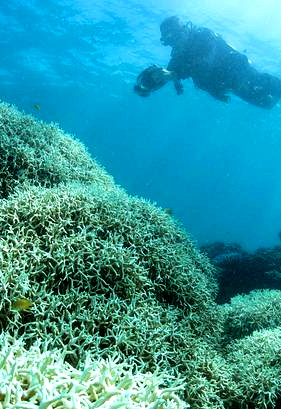Experts repeat Reef warnings
 Experts say the current decline in Great Barrier Reef coral coverage is a phenomenon that “has not been observed in the historical record”.
Experts say the current decline in Great Barrier Reef coral coverage is a phenomenon that “has not been observed in the historical record”.
A new report by the Australian Institute of Marine Science (AIMS) has found major bleaching events in 2016 and 2017 – the first time bleaching events have occurred in successive years.
“Over the 30-plus years of monitoring by AIMS, Great Barrier Reef reefs have shown their ability to recover after disturbances, but such ‘resilience’ clearly has limits,” the report says.
“The predicted consequences of climate change include more powerful storms and more frequent and more intense bleaching events.
“More intense disturbances mean greater damage to reefs, so recovery must take longer if the growth rate remains the same. At the same time, the intervals between acute disturbance events are decreasing and chronic stresses such as high turbidity and high ocean temperatures can slow rates of recovery.”
Some reefs in the northern have lost close to half their coral cover.
The central section “sustained significant coral loss due to coral bleaching and the continued southwards spread of the current wave of crown-of-thorns starfish outbreaks”, with total coral cover down from 22 per cent in 2016 to 14 per cent in 2018.
“The geographic scale of recent bleaching means that breeding populations of corals have been decimated over large areas, reducing the potential sources of larvae to recolonise reefs over the next years,” the report says.
“It is unprecedented in the 30-plus year time series that all three regions of the [reef] have declined and that many reefs have now very low coral cover.
“The prognosis of more frequent disturbances, each causing greater damage to reefs, combined with slower rates of recovery will inevitably lead to less living coral on reefs.”
Australian Marine Conservation Society spokesperson Imogen Zethoven said: “We need the government to see this as a national crisis”.
“We are responsible for the protection and conservation of this world treasure. We have a legal and moral obligation to look after it.”








 Print
Print